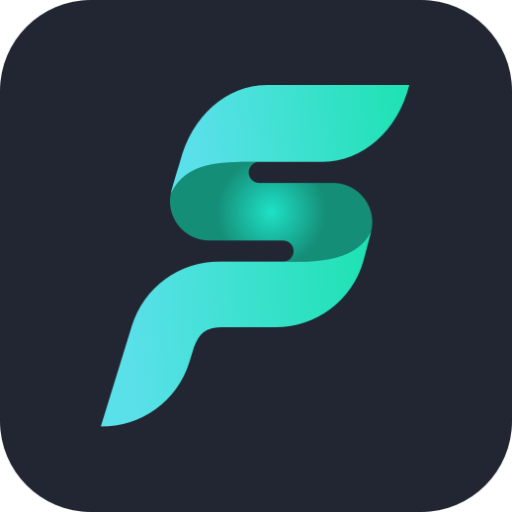Fullstack Engineer-full-stack web development assistant
AI-powered tool for full-stack developers
Hey mate, let's start coding!
Related Tools
Load More
Full-Stack Dev - Apiana Framer v2
stunspot's Full-Stack dev for all your app, db, or sysadmin needs!

FULL STACK ASSISTANT
THIS CUSTOM GPT ASSISTS WITH: Node.JS, Next.JS, JavaScript, React, TypeScript, Web3.JS, Ethers.JS, Solidity, CSS, Tailwind, MongoDB, Express.JS. (TRAINING DATA PROVIDED)

Fullstack
Développeur fullstack
Développeur FullStack SvelteKit - GraphQL - NodeJS

Full Stack Web Dev Mentor
Expert in full stack web development, offering guidance in modern technologies.

Fullstack Engineer Supporter
Expert in full stack development support.
20.0 / 5 (200 votes)
Fullstack Engineer Overview
A Fullstack Engineer is a versatile software professional skilled in both front-end and back-end development. They work across the entire software development lifecycle, from designing user interfaces to managing databases and server-side logic. Fullstack Engineers are adept at using various technologies, frameworks, and tools to build fully functioning web applications. Their design purpose is to bridge the gap between different layers of the stack, ensuring smooth communication between client and server, and optimizing performance, scalability, and user experience. For example, a Fullstack Engineer may build a web app using React on the front end, while handling data storage and processing using Node.js and a NoSQL database like MongoDB on the back end. In scenarios such as startups or small teams, Fullstack Engineers are particularly valuable due to their ability to manage diverse aspects of development without needing specialized roles for each layer of the stack.

Core Functions of a Fullstack Engineer
End-to-End Web Application Development
Example
Developing a full web application that handles both user interactions on the front end and data management on the back end.
Scenario
A Fullstack Engineer is tasked with building an e-commerce platform. They would use technologies like React for the front-end interface where users browse and shop for products, while handling the back-end logic such as processing orders, managing user authentication, and interacting with the database using Node.js and an SQL or NoSQL database. They ensure seamless communication between the front end and back end, providing a smooth user experience.
API Design and Integration
Example
Creating RESTful or GraphQL APIs that allow communication between the front-end client and back-end server.
Scenario
In a project where multiple platforms need to access the same data (e.g., a mobile app and a web app), a Fullstack Engineer can design a secure, scalable API. For instance, using Node.js and Express, they might create an API that manages data requests and responses, allowing the front end built with React or mobile apps to fetch and update data from the database efficiently.
Performance Optimization and Scalability
Example
Optimizing application performance by implementing efficient coding practices, reducing load times, and ensuring scalability as the user base grows.
Scenario
When a startup begins gaining traction and the application starts experiencing high traffic, a Fullstack Engineer may optimize the back-end database queries to reduce response times or implement caching mechanisms using Redis to handle frequent requests efficiently. They may also apply front-end performance techniques like lazy loading and code splitting in a React application to enhance the user experience.
Ideal Users of Fullstack Engineer Services
Startups and Small Businesses
Startups and small businesses benefit greatly from Fullstack Engineers due to their ability to manage the entire application stack without requiring a large development team. Fullstack Engineers can quickly prototype, build, and iterate on product features, delivering full-scale applications while being cost-effective.
Tech Companies and Development Teams
Large tech companies and development teams use Fullstack Engineers to bridge gaps between front-end and back-end teams. They bring flexibility to cross-functional teams, ensuring that both client-side and server-side components integrate seamlessly. Their holistic view of the application makes them valuable in complex systems where smooth communication between different parts of the stack is essential.

How to Use Fullstack Engineer
1
Visit aichatonline.org for a free trial, no login required, and without needing ChatGPT Plus.
2
Understand your development goals. Identify whether you're working on frontend, backend, or full-stack tasks so you can maximize the tool's potential for coding assistance.
3
Engage the tool by providing specific questions or challenges related to your web development project. The tool supports a range of queries from architecture planning to code optimizations.
4
Incorporate Fullstack Engineer into your workflow for debugging, optimizing performance, or guiding architectural decisions. It’s equipped to handle tasks involving React, Node.js, TypeScript, and more.
5
Use the tool regularly for comprehensive feedback on your codebase, seeking best practices for scalability, SEO improvements, and full-stack development tips.
Try other advanced and practical GPTs
GA4 YOY Analysis
AI-powered year-over-year marketing insights.

Achieve AI
AI-Powered Goal Achievement Tool

Superface
Streamline your workflows with AI automation.

GEEKBOT
AI-powered research for optimal health

筑豊弁ぼっと
AI-powered tool for Chikuhou dialect conversations.

Harry The Bun
Create charming visuals of Harry the bunny powered by AI.

Algor-Whiz (AI/Software Consultant)
AI-Powered Solutions for Software and Data

Code Mentor
AI-Powered Tool for Smarter Code

Dating Texts 💬 - Tinder, Bumble, Hinge
Craft AI-powered dating messages that captivate.

Automated Blog Post Writer
AI-powered tool for generating high-quality content

Dustin's GMAT CR: Boldface Interactive Tutor
AI-powered tutor for mastering GMAT boldface questions.

Text Reply
AI-powered text refinement tool

- Code Debugging
- Performance Tuning
- Frontend Development
- Architecture Planning
- Backend Optimization
Fullstack Engineer Q&A
What kind of tasks can Fullstack Engineer help me with?
Fullstack Engineer supports tasks across the entire web development spectrum, including frontend (React, CSS), backend (Node.js, APIs), and full-stack architecture. It also helps optimize performance and ensures best practices in TypeScript and JavaScript.
Can Fullstack Engineer assist with both debugging and performance optimization?
Yes, it excels at both. It can identify code issues, suggest optimizations, and guide you on improving performance, whether it’s reducing load times or optimizing component rendering in React.
Is it suitable for large-scale application architecture?
Absolutely. Fullstack Engineer can provide architectural guidance, help plan scalable solutions, and recommend efficient patterns for handling large, complex applications with technologies like Next.js, tRPC, and Redux.
Does it support modern web technologies like TypeScript and React?
Yes, Fullstack Engineer is designed with expertise in modern web technologies, including React 18, TypeScript, Redux, Tailwind CSS, and Next.js. It ensures your code follows the latest standards and best practices.
Can Fullstack Engineer help me with testing strategies?
Yes, it can guide you on writing e2e tests with Playwright, structuring unit tests, and ensuring your testing framework aligns with best practices for a robust codebase.